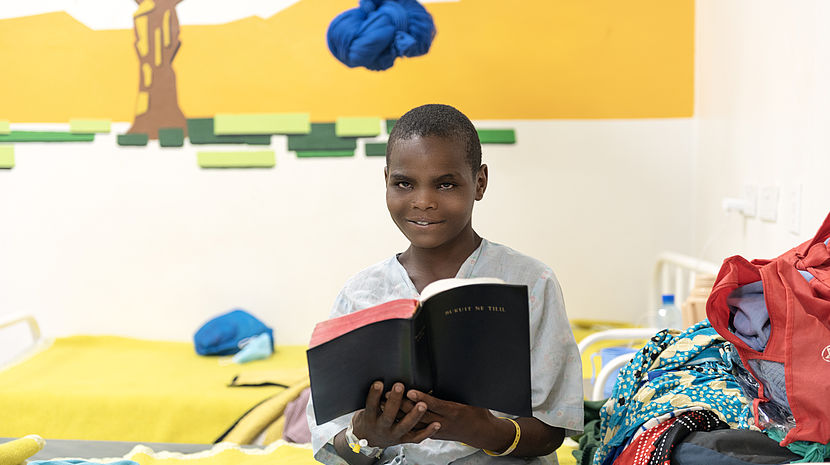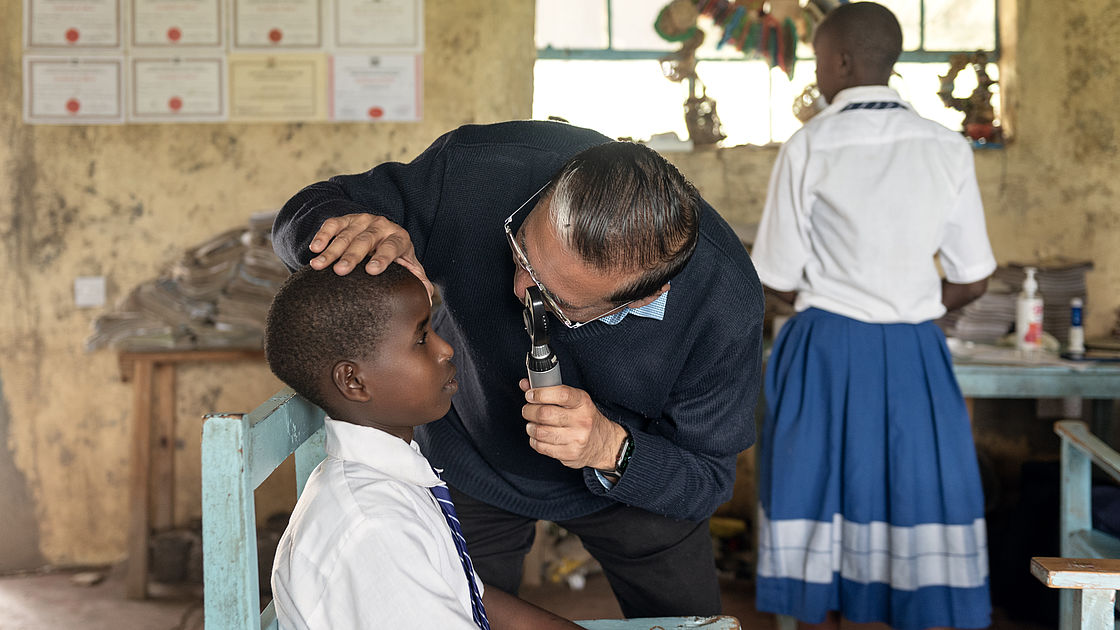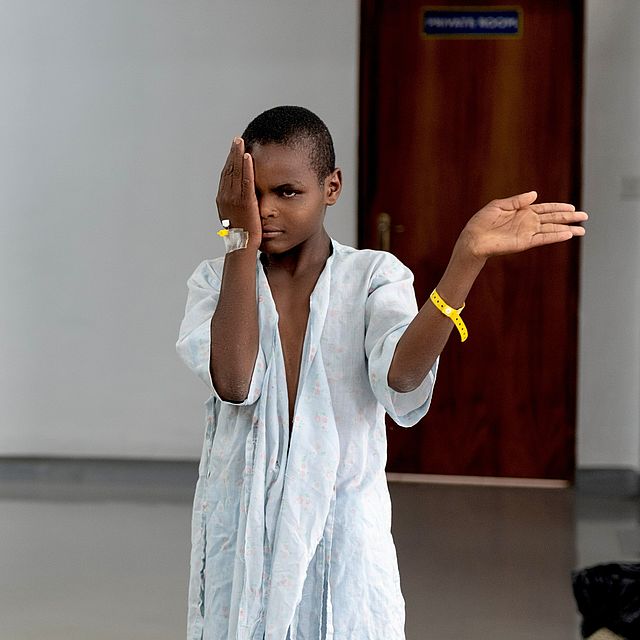CBM Makes Progress in Reducing Avoidable Blindness in Kenya

Through the Vision Impact project, Emmanuel's eyesight was saved by CBM partner Tenwek Hospital in Kenya. He is looking forward to going to school and becoming a mechanical engineer.
©CBM/Gitonga
Targeting more than eight million people, project activities will ensure that people have access to effective eye care and that those who are permanently affected by visual impairment receive the support and opportunities they need.
With financial support from CBM, two new eye centres were completed and opened in Kajiado and Vihiga counties in Kenya. The centres will complement activities being implemented for the diagnosis and treatment of at least one million people in these counties.
The two facilities were inspected by Babar Qureshi, CBM Director of Inclusive Eye Health, during his visit to the largest CBM project in the East African country. The Vision Impact Project (VIP) was launched in April 2022 to provide inclusive access to quality public eye health services in seven counties in Kenya.
"CBM has made a good strategic investment in improving eye health services in Kenya, not only in the counties but also at the national level. I was touched to see so many people in the communities and children in the schools benefiting from our services," said Qureshi.

Babar Qureshi, CBM Director of Inclusive Eye Health, examines the eyes of a student, Sheila. Sheila has low vision impairment.
CBM/Gitonga
The project, with a total budget of 17 million euros financed by CBM and the German Ministry for Economic Cooperation and Development, targets more than eight million people. It is in line with CBM's work to ensure that all people have access to effective eye care and that those who are permanently affected by visual impairment receive the support and opportunities they need.
CBM focuses on creating inclusive, sustainable, locally run eye health services to achieve this.
A multi-sectoral approach is taken: community-based inclusive development, rehabilitation and inclusive education services are part of the project.
The Need
It is estimated that about 7.5 million Kenyans need eye care services for age-related cataracts, diabetic eye complications, refractive errors, trachoma, allergic eye diseases and reading difficulties.
Only 1.6 million of them have access to eye care services, both in public and private facilities. This is because there are not enough eye care professionals, limited infrastructure, eye care equipment and medical supplies for screening, treatment, and surgery.
Kennedy Odero, CBM Kenya VIP Programme Coordinator, says the project responds to unmet needs identified in the National Eye Health Strategic Plan 2020-2025. CBM supports:
- Training for health workers in eye health,
- the provision of eye equipment,
- the construction of eye centres, and
- the supply of medical supplies for quality eye health services.
"We hope that through a strengthened eye health system, we will have a country with a lower prevalence of visual impairment and avoidable blindness," says Odero.
"I always see the importance of our work in the people I meet. I met a man in a remote village who was blind unnecessarily. He was examined and diagnosed in his home village and sent to the newly opened eye clinic for cataract surgery. Without the support of CBM and its partners, he would not have had access to all this. He represents so many hundreds of people in Kenya and around the world."Babar Qureshi, CBM Director of Inclusive Eye Health
Delivering Inclusive Health Systems Across All Levels of Healthcare
The project follows a public-private partnership approach. CBM is working with its partners, the government and government health facilities to ensure that eye health is addressed at all levels of the health system - primary, secondary and tertiary. The Ministry of Education, Ministry of Health and Ministry of Labour and Social Protection through the National Council for Persons with Disability are involved in planning, implementation and monitoring.
The government is already thinking about how to ensure sustainability by including budgets for eye health in its development plans. County governments are also seeking to increase participation in national health insurance schemes. In this way, eye health services in Kenya will no longer depend on CBM support in the long term.

Emmanuel Can See
Emmanuel could not read and write well. He had difficulty seeing the blackboard from the back of the class. He was in the first grade.
The teacher moved him to the front of the class, but that did not help him. He still had problems with reading and writing.
"I knew my son was having a difficult time, but I chose to believe that it was God's plan for Emmanuel to be like this. I did not have any money. If I had money, I would have bought him glasses even without a diagnosis."
Despite his eye condition, Emmanuel loves school and never skips classes. Now he is in the seventh grade.
"When I grow up, I want to be a mechanical engineer," he says.
As part of a school outreach programme conducted by CBM's Vision Impact Project (VIP), Emmanuel was examined and diagnosed with cataracts. The teacher explained the diagnosis to his mother and referred them to Tenwek Hospital in Bomet County, Kenya. He underwent cataract surgery which was successful. The surgery cost Ksh 16,500 ($127).
''If I had been asked to pay this amount, I would have gone back home with him. I could not have afforded it,'' says Emmanuel's mother.
For Emmanuel, the operation means a new life. ''I can see much better now because I can see things I could not see before the operation. I am more excited than ever to keep learning,'' he says.